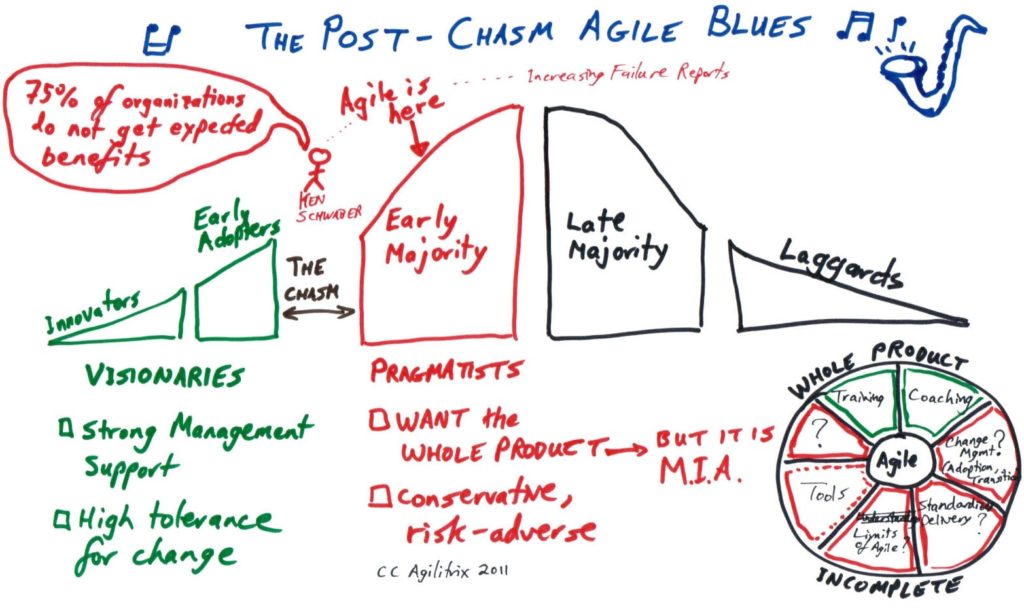Agile has crossed the chasm and things are different over here. Really different. And not so good.
It feels like we have landed at Dieppe (Canadian/British Military WW2 Failure). The bad news is that there is significant failure successfully adopting Agile. The good news is that we can recognize it and learn from it.
Technology Adoption and The Chasm
Geoffrey Moore’s crossing the chasm introduces the notion of phases in technology adoption.
Consider the diagram below:

As a community, we have experienced a lot of success working with Innovators, Early Adpoters. Here we are working with visionaries that have a high tolerance for change and provide strong management support.
The problem is that we are now working with the Early Majority. The recent announcement of PMI certification is pretty strong evidence of entering the early majority.
So what’s the problem? “75% or organizations do not get the benefits they expect.” – Ken Schwaber. These are pragmatists. Their goals are to avoid risk and change as little as possible. They want to buy some off-the-shelf Agile so they can get the benefits, with the least effort. They have heard good things about Agile and want the Agile Tooth Fairy to come in wave a magic wand.
Agile is not an out-of-the-box solution. I don’t there will ever be one, but we can build more around Agile to change the world of work.
We all have a pretty good idea (more or less) what Agile is. The problem is that the whole product is only partly defined by our community. For example, tools that do not scale to Enterprise needs. Some level of agreement about when to use Agile and when not to. Sorry, that I can’t paint a clear picture of what the whole product looks – still figuring this out. (If you have one, let me know).
There are for sure many talented coaches who have something that approaches whole product thinking. We need to do better communicating and growing our ideas around this or we will fail as a community.
External Related Blog Posts
- Agile’s Second Chasm (and how we fell in)
- Agile is Here to Stay… Now What?
- Agile @ 10 Years – Elephants in the Room
Epilog (Apr. 12, 2011)
I am thinking more and more that Agile is so tightly bundled with modern management culture that this is less about the whole product and more about organization evolution.


